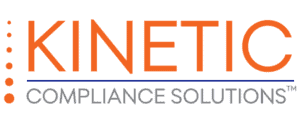Your Medical Innovations, the FDA and Regulatory Strategy
As you strive to speed your innovations to the medical marketplace, it can feel challenging to explore development while also balancing US Food and Drug Administration (FDA) regulations. The good news is, it’s clear to see the FDA both wants to support industry innovations and advance discovery as well as find effective ways to regulate new products that are emerging.
The FDA Commitment to Innovation and Safety
In recent years the FDA has identified eight priority areas where “new or enhanced engagement in regulatory science research is essential to advancing its regulatory mission.” This shows their unwavering commitment to ensuring product quality, while fostering innovation through improved science. Among those priorities are:
- Supporting new approaches to improve product manufacturing and quality
- Ensuring FDA readiness to evaluate innovative emerging technologies
- Harnessing diverse data through information sciences to improve health outcomes
These are just a few of the areas of focus identified by the FDA.
In addition, the FDA further demonstrated its commitment to innovation in 2017 with the inaugural year for the FDA Innovate Today Summit. The FDA Innovation Lab strives to cultivate a culture of innovation to deliver treatments and cures that are innovative, safe, and effective—as quickly as possible—to the patients who need them.
For manufacturers, that means it’s essential to build an effective regulatory strategy. A well-conceptualized regulatory strategy will serve as a map, charting your direction while anticipating potential barriers, risks or challenges that your drug, device or other innovation may face.
Understanding Regulatory Strategy
Regulatory compliance strategy can have a broad definition that varies widely between regulatory professionals—but simply put, it is your organization’s compass for navigating FDA regulations, regulatory compliance matters, clinical trials, and testing standards. It’s a complex and rapidly-changing environment, which is why many seek to partner with a team of compliance experts. Working with the right legal and regulatory partners gives organizations a competitive edge by quickly and effectively obtaining regulatory approval and delivering their product to market.
Developing a regulatory strategy early in your product’s lifecycle is a crucial step in supporting business goals. Here are just a few reasons why:
- Making one claim versus another can change the classification (and regulatory pathway) for your device.
- Evaluating the level of evidence necessary for your submission (bench, pre-clinical or clinical) based on the claims you want to make ensures that your submission gets through FDA as smoothly as possible.
- Understanding how (and when) to interact with FDA and other regulators is key, should you need that level of assistance.
- And evaluating ways to design or market your products so they can launch as unregulated products should be considered to allow for a quick revenue stream. This should happen prior to making medical device claims or turning on medical device functionality. I like to use the simple example is it a popsicle stick or a tongue depressor? One is regulated by FDA and one is not (I’ll let you guess which is which).
- Further, implementing a regulatory strategy early can help in predicting certain design requirements based on FDA’s current focus. Upcoming and revised standards, guidance documents and regulations change fairly consistently and can lead to delays if not considered early in a product’s lifecycle.
- Isolating non-medical device software in your architecture can lead to less scrutiny by FDA around this portion of your device.
Over the long-term a strong strategy will help your development team maintain focus, saving the enterprise both time and money.
The regulatory world, experts say, will likely continue to increase in complexity. New and updated standards continue to emerge, and staying on top of them is essential to ensuring your innovation makes a seamless transition from development to market.
Next Steps in Developing a Regulatory Strategy
Developing a regulatory strategy is an essential step toward achievement of your innovation and development goals. As a bonus, your compliance strategy will help your product get to the people who need it most for their health, faster.
If the task seems daunting, know that you are not alone. By partnering with the right team of compliance experts you can gain valuable insights and advantages that can help accelerate your time-to-market. Kinetic Compliance can help; for more information on how we can assist you with your regulatory strategy development, contact us.

